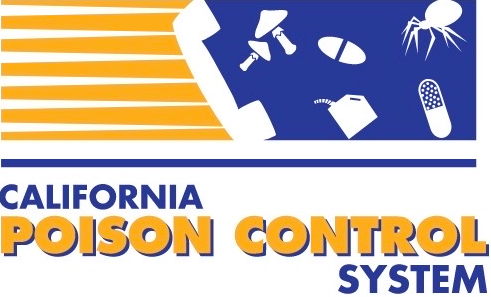By Mike Darracq, MD MPH
Introduction
Arsenic is a naturally occurring and ubiquitous metalloid that can result in poisoning from a variety of sources including environmental and occupational exposures as well as more nefarious intent including homicide and suicide. Historically, arsenic has been referred to as the “Poison of the Kings” and “King of Poisons” secondary to the potency and discreteness of action and historical use in the murder of political opponents. More recently, arsenic trioxide, has been increasingly used as treatment for promyelocytic leukemia (PML). Contaminated food, water, and soil are the primary sources of arsenic for the general population. Groundwater contamination by arsenic has severely impacted the health of various populations in certain regions of the world such as Bangladesh and West Bengal. There are considerable challenges associated with arsenic exposure, as many forms exist with varying degrees of toxicity. Clinical manifestations demonstrate multiple organ system involvement and depend on the acuity of exposure and individual variability in metabolism.
Case presentation
A 49 year-old Central California woman has been experiencing a several month history of non-healing vesicles and bulla covering her hands and has been recently diagnosed with diabetes mellitus type II and hypertension. Her laboratory findings demonstrate a mild leukopenia (WBC 5000/mm3) and normocytic anemia (Hemoglobin 7g/dL). An EKG demonstrates a normal sinus rhythm with a QTc interval of 495ms. Her 24-hour urinary arsenic level is 62 mcg/L.
Questions
- Is this consistent with arsenic toxicity?
- What are potential sources of exposure?
- What is the significance of an arsenic level of 62 mcg/L?
Physical characteristics and toxicity
Arsenic exists in elemental, gaseous (arsine), organic and inorganic forms. Metallic arsenic is generally thought to be nontoxic as it is insoluble in water or bodily fluid. Inorganic arsenicshowever can be toxic dependent on valence state: trivalent (As3+) and pentavalent (As5+) state. Arsine gas is highly toxic and exposure occurs in industrial settings when arsenic-containing ores or metals come into contact with acidic solutions. Organic arsenics vary in toxicity with arsenobetaine found in fish and shellfish and arsenosugars having very low toxicity while melarsoprol, used in the treatment of African trypanosomiasis having toxicity similar to that of the inorganic arsenics. These multiple states, individual variability in metabolism, and differences in toxicity following acute and chronic exposures contributes greatly to the confusion and difficulty of diagnosis and management of patients with arsenic exposure and poisoning.
Mechanism of toxicity
Arsenics exhibit different mechanisms of toxicity dependent on the valence state. Trivalent arsenicals (arsenite) are thought to inhibit multiple enzymatic pathways through inhibition of the regeneration of lipoamide from dihydrolipoamide. Lipoamide is an important cofactor in the conversion of pyruvate to acetylcoenzyme A (acetyl-CoA), a central molecule involved in metabolism. Decreased acetyl-CoA leads to decreased citric acid cycle activity and disruption of oxidative phosphorylation. This also leads to a deficiency of succinyl-CoA, an important factor in red blood cell maturation. Trivalent arsenicals also inhibit thiolase with resultant inhibition of fatty acid oxidation. They additionally inhibit glutathione synthase, and glucose-6-phosphate dehydrogenase (G6PD) with resultant inability to prevent oxidative stress and free radical generation and subsequent lipid peroxidation. Trivalent arsenicals also may prolong the QTc interval by inhibiting potassium channels within the heart.
Pentavalent Arsenicals (arsenate) produce toxicity through a different proposed mechanism. Some arsenate will be reduced to arsenite. Arsenate may also substitute for phosphate groups in the conversion of adenosine diphosphate (ADP) to adenosine triphosphate (ATP).
Pharmacokinetics
Inorganic arsenic is odorless and tasteless and can be absorbed by several routes including gastrointestinal, respiratory, intravenous and mucosal routes. Inorganic arsenics are thought to exhibit a three-phase mode of distribution and subsequent clearance. Following an acute exposure, up to 90% of arsenic is cleared from the blood with the majority being thought to have redistributed to organ tissues (skin, liver, kidney, and muscle) within a few hours of exposure. Thus, blood testing may not be helpful except early following an acute exposure. The remaining arsenic following phase I has a more gradual clearance from the blood over 1-7 days. The bulk of arsenic that has redistributed to organ tissue has a more prolonged elimination over days to weeks with renal elimination being predominant.
Arsenobetaine and arsenosugars found in fish, shellfish, and algae are excreted rapidly in the urine unchanged with 85% being eliminated after 6-7 days. This is in stark contrast to the days to weeks involved with the excretion of inorganic arsenics.
Toxicity
Toxic manifestations vary depending on amount and form ingested as well as the chronicity of ingestion. Following a large acute oral exposure to inorganic arsenic (arsenite or arsenate), patients will develop gastrointestinal symptoms including severe nausea, vomiting, abdominal pain, and diarrhea. This diarrhea has been described as “rice-water” in consistency. Gastrointestinal symptoms are the earliest manifestation of acute oral poisoning and occur within minutes to several hours following ingestion. Multi-organ dysfunction may ensue with large exposures. Cardiovascular dysfunction including sinus tachycardia, hypotension, and shock has been reported. This is secondary to multiple mechanisms including decreased contractility of the heart, increased vascular permeability, and diminished peripheral vascular tone. Prolongation of QTc interval may occur with resultant dysrhythmias. Encephalopathy, coma, delirium, and seizures may occur over several days following acute exposure due to cerebral edema. Acute lung injury (ALI), acute respiratory distress syndrome (ARDS), frank respiratory failure, hepatitis, hemolytic anemia, and renal failure have all been reported. Less severe exposures may result in a prolonged gastrointestinal phase despite fluid supplementation and antiemetic therapy.
Those that survive the initial acute exposure may subsequently develop a peripheral neuropathy in a stocking-glove distribution, initially sensory with an often exaggerated painful response to delicate stimuli, followed by the development of a motor neuropathy. Bone marrow suppression, chronic respiratory syndromes including cough, dyspnea, and chest discomfort may result. Chest imaging may reveal a patchy infiltrative pattern. Patchy alopecia, desquamation, herpetiform lesions and diaphoresis and edema of the face may similarly occur.
Chronic arsenic poisoning is somewhat more insidious and occurs most frequently from environmental or occupational exposures. Skin changes, both malignant and nonmalignant, hypertension, diabetes mellitus, peripheral vascular disease (“Blackfoot disease”), and cancers of the lung, liver, bladder, skin have all been associated with chronic arsenic exposure. The skin is particularly susceptible to the toxic effects of arsenic and multiple lesions have been described including alterations in pigmentation, hyperkeratosis, squamous cell carcinoma, basal cell carcinoma and Bowen disease (intraepidermal squamous cell carcinoma). Blackfoot disease is an obliterative peripheral vascular disease that occurs in areas of Taiwan where inorganic arsenics are endemic. Pulmonary changes, hepatic fibrosis, neuropathies, and bone marrow suppression may similarly occur.
Exposure to arsine gas can cause hemolysis, with subsequent hemoglobinuric renal failure and death.
Diagnosis and testing
To appropriately interpret arsenic laboratory data, one must be aware of the large number of potential confounders that may lead to elevation in arsenic levels. These include a large number of food products that contain organic arsenics (nontoxic) and the accumulation of nontoxic arsenic metabolites in patients with underlying renal disease and impaired clearance. Similarly, an understanding of the timing of absorption, metabolism, clearance, and elimination are essential in the interpretation of arsenic lab data.
Diagnosis ultimately depends on an appropriate history and physical examination with potential confirmation via blood or urinary arsenic levels. In an acute setting, elevated spot urine arsenic confirms exposure in a patient with characteristic history and physical findings; however, a low concentration does not rule out significant poisoning. Definitive diagnosis depends on the collection of a 24-hour urine arsenic level greater than 50 mcg/L, 100 mcg/g creatinine, or 100 mcg total arsenic. Because seafood can transiently elevate arsenic levels up to >1700mcg/L, collection should take place ideally after a 1-2 week abstinence from food containing arsenic (in particular, fish or shellfish) in a metal free polyethylene container that has not been acid washed. Acid washing is thought to alter speciation of arsenic. Elevated levels of arsenic should be speciated using High Performance Liquid Chromatography (HPLC) separation and subsequent Mass Spectrometry to differentiate between the various valence states of inorganic arsenic and the presence of organic arsenics such as arsenobetaine.
Other testing should include a complete blood count where a normocytic, normochromic, or megaloblastic anemia may be seen. Leukocytosis acutely followed by leukopenia and thrombocytopenia may occur. Basophilic stippling and karyorrhexis (rupture of a cell nucleus) may be seen following arsenic exposure. Karyorrhexis may occur as early as 4 days following exposure and may last up to 2 weeks following exposure. Elevated serum creatinine and aminotransferases with a low or falling haptoglobin may similarly assist in the diagnosis of arsenic toxicity.
Treatment and chelation therapy
Acute arsenic poisoning is life threatening and appropriate supportive care is indicated. Careful attention to fluid and electrolyte balance and monitoring for EKG changes is indicated. Decontamination remains controversial as arsenic binds poorly to activated charcoal, bentonite, or cholestyramine. Significantly poisoned patients usually have nausea and vomiting, and administration of charcoal may lead to aspiration. Nevertheless, the benefit of a small amount of binding may be indicated. Attention to airway protection should be addressed if gastric decontamination is pursued. If radiopaque material is visualized on abdominal radiograph, whole bowel irrigation should be considered and continued until no radioopaque material is visualized on abdominal imaging.
Following chronic exposure to arsenic, the immediate priority is to identify the source and remove patients from continued exposure. Chelation therapy is controversial as these products are not without potential associated risks and indications for termination of chelation therapy is unclear. Dimercaprol (British Anti-Lewisite or BAL) and Succimer (2,3-dimercaptosuccinic acid or DMSA) are the two chelators available in the United States that have demonstrated some ability to remove arsenic from the body. The decision to initiate chelation should be dependent on the severity of illness. Acutely poisoned, seriously ill patients may benefit from chelation prior to laboratory confirmation. BAL is the chelator of choice for seriously ill patients. BAL is a suspension in peanut oil that can only be delivered via deep intramuscular injections. Dosing is 3-5 mg/kg every 4-6 hours. Side effects and limitations include hypertension, fever, diaphoresis, GI effects, hemolysis in G6PD-deficient patients, sterile abscess development, and the chelation of other essential elements following prolonged course. Animal studies suggest that BAL may actually cause a shift of arsenic into the brain. Succimer is an oral analog of BAL that may be used in subacute or chronic exposure. Adverse effects include transient hepatic aminotransferase elevations, nausea/vomiting/diarrhea, thrombocytosis, eosinophilia, rash, and pruritus. Dosing is 10 mg/kg/dose every 8 hours for 5 days followed by 10 mg/kg/dose every 12 hours.
Discussion of case questions
- The patient does demonstrate some findings suggestive of arsenic poisoning, however these symptoms are also nonspecific and may reflect other etiologies. In particular, the diagnosis of hypertension and diabetes while associated with chronic arsenic exposure has many other causes. Similarly, a mild leukopenia, anemia and QTc interval prolongation are nonspecific. The clinician must have a high index of suspicion and consider other potential etiologies in addition to arsenic toxicity.
- Food products and environmental or occupational exposures are a common source of arsenic exposure. A very careful history regarding environment, occupation, and dietary habits is essential. Arsenic containing wood preservative (Copper Chromate Arsenic) was previously used as a means to preserve wooden structures and many older homes may still contain wood treated in this manner. Similarly, a seafood-rich diet may elevate total arsenic levels. In some areas of the world, inorganic arsenic contamination of drinking water is an important source of exposure. More recently, Dr. Oz, a television personality, suggested that the United States is poisoning children secondary to arsenic being found in apple juice. What he failed to mention is that the predominant form of arsenic found in apple juice and other consumer products is organic arsenic, with inorganic levels well below those considered toxic.
- While elevated, this level of arsenic and the clinical presentation does not necessitate immediate chelation treatment. Speciating the specimen should be considered to determine the predominant form of arsenic present. The test should also be repeated following a two-week period of seafood, supplement, or alternative therapy abstinence. Traditional Chinese Medicine (TCM) and other non-regulated products have previously been demonstrated to contain arsenic.



